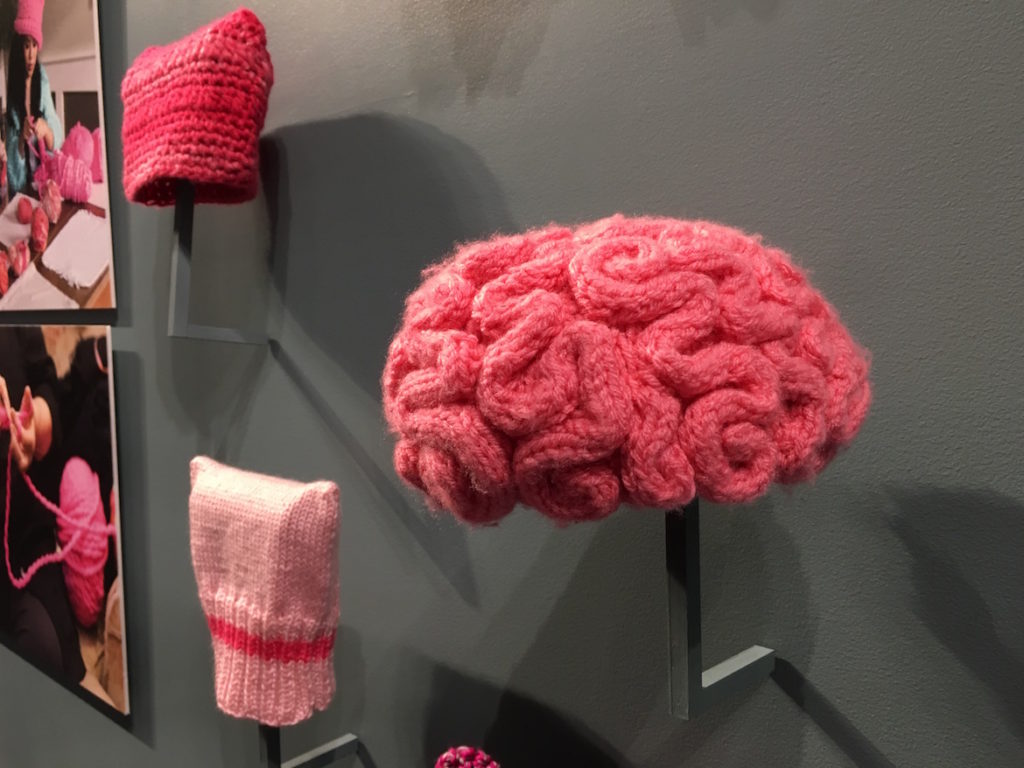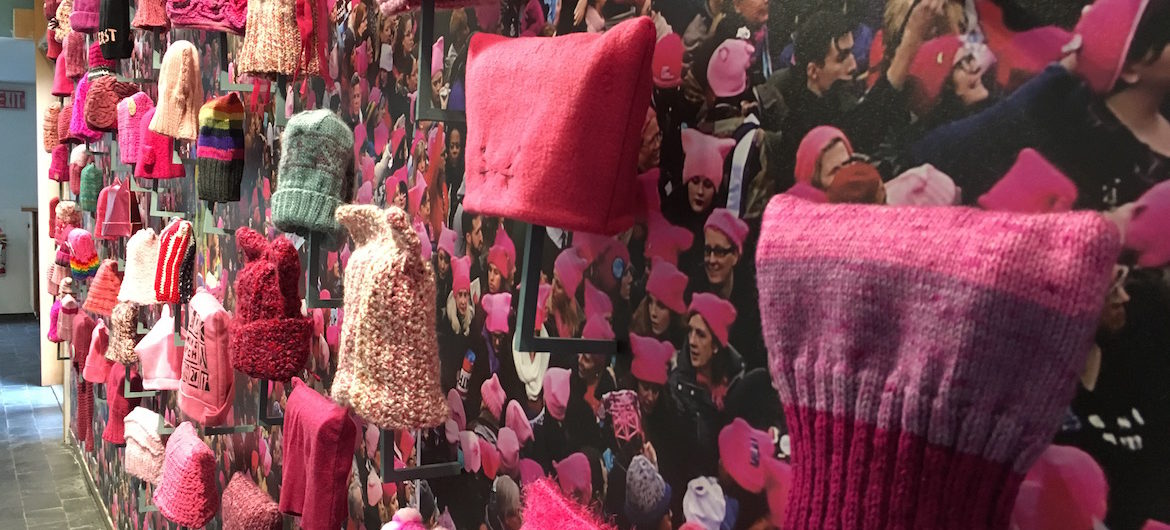One year after hundreds of thousands of Americans took to the streets in Women’s Marches across the nation to signal their opposition to the Trump administration, Brockton’s Fuller Craft Museum is opening an exhibition of the homespun pink pussyhats that became icons of the protests.
“It really became so much more than these hats on that one day,” says Beth C. McLaughlin, the museum’s chief curator and organizer of “Revolution in the Making: The Pussyhat Project,” on view at the museum from Jan. 20 to May 20, 2018. “It quickly became the symbol of protest culture. … It quickly became the symbol of the resistance.”
A year ago, McLaughlin herself had just returned inspired from participating in the Women’s March on Washington. For the first time since being devastated by Trump’s election, she recalls, she began to feel hope again. “Here were all these millions of people. We’re going to be able to fight this. This feeling of solidarity.”
The pussyhat phenomenon was a powerful mass statement that Trump’s sexism and sexual harassment was wrong and that you were not alone in feeling that way. The hat was a way to find each other and show how many stood in resistance.
“The pussyhat had risen to the top of pop culture and was such an important moment for craft history and craftivism,” McLaughlin says. She “realized we need to collect those.”
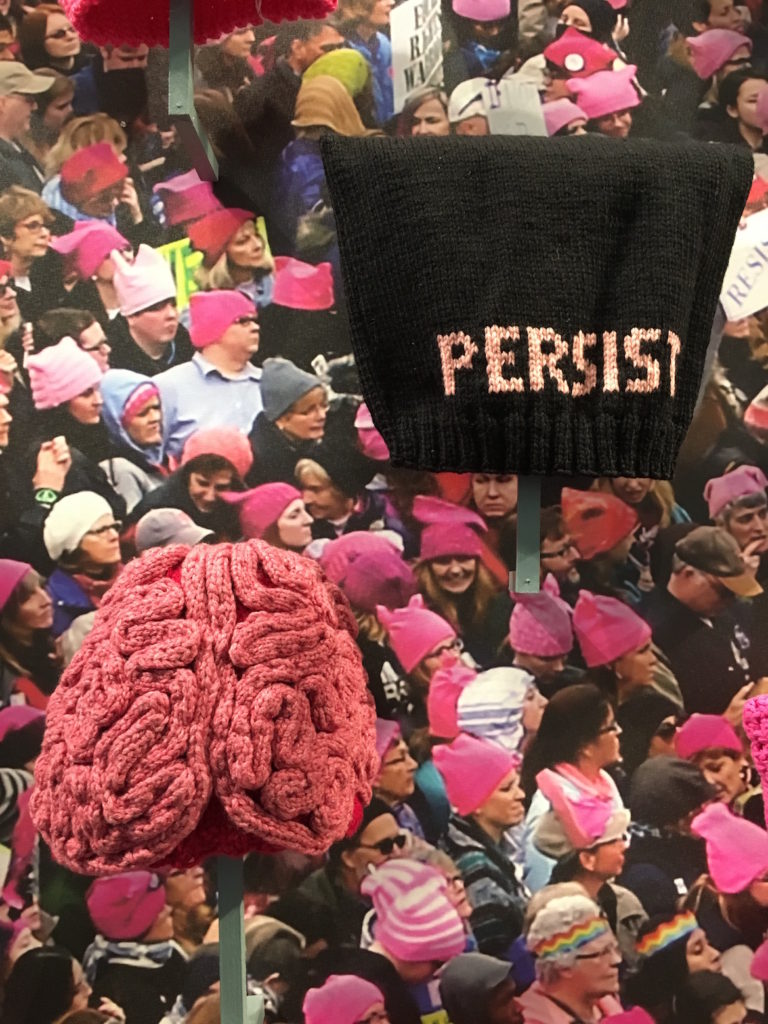
The Pussyhat Project was begun by a group of Los Angeles women—screenwriter Krista Suh and architect Jayna Zweiman with pattern help from their local knitting shop owner, Kat Coyle—around Thanksgiving 2016. They were responding to Trump’s election and his notorious comments about the liberties male stars can take with women—“Grab them by the pussy. You can do anything.”—that were caught on a hot mic during a 2005 “Access Hollywood” television interview. The Pussyhat Project was part of a larger effort to reclaim and transform Trump’s insult into a statement of defiant power—often using the “This pussy grabs back” slogan.
Pussyhat Project organizers shared a purposely simple cat-ear pattern that became an international, viral phenomenon. “The point of such a simple pattern was that everyone could do it,” McLaughlin says. “There was so much welcoming and accessibility that went into the design.”
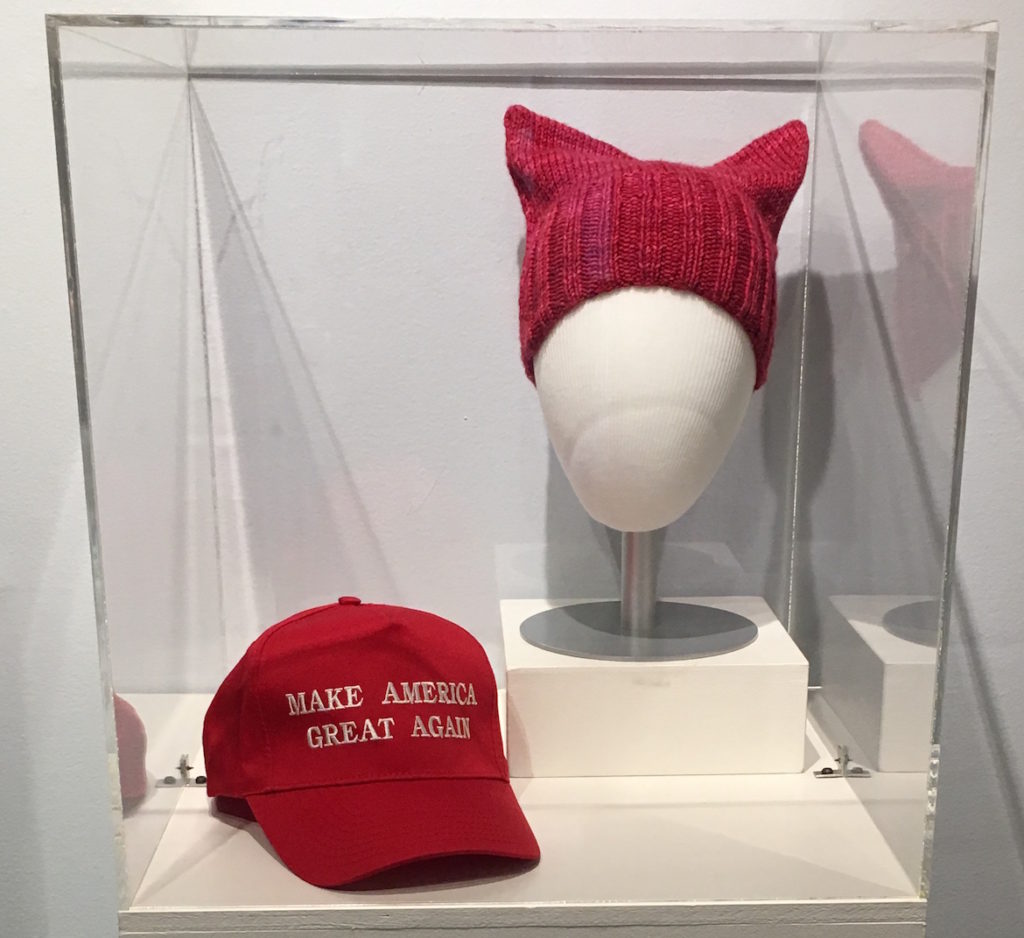
A year ago, the Fuller Craft Museum decided to preserve some of the phenomenon. They put out a call seeking pussyhat donations to create an archive of what the museum calls “the largest example of social activism through craft (craftivism) in U.S. modern history.”
McLaughlin says, “The response was so overwhelming from people who were so excited to give us their hats. There was this hope.”
The museum collected 65 hats, including “the original test pattern hat from the Pussyhat Project,” McLaughlin says. The exhibit also features an American flag pussyhat, a rainbow hat, hats that say “Resist” and “Persist,” “brain hats,” knit and crocheted and sewn hats. The exhibit also includes signs from the marches. “We’re really trying to share the voices of the march,” McLaughlin says. One case compares the pussyhat with the Trump campaign’s iconic red “Make America Great Again” baseball cap. “It really was this individualized effort that collectively made this big statement.”
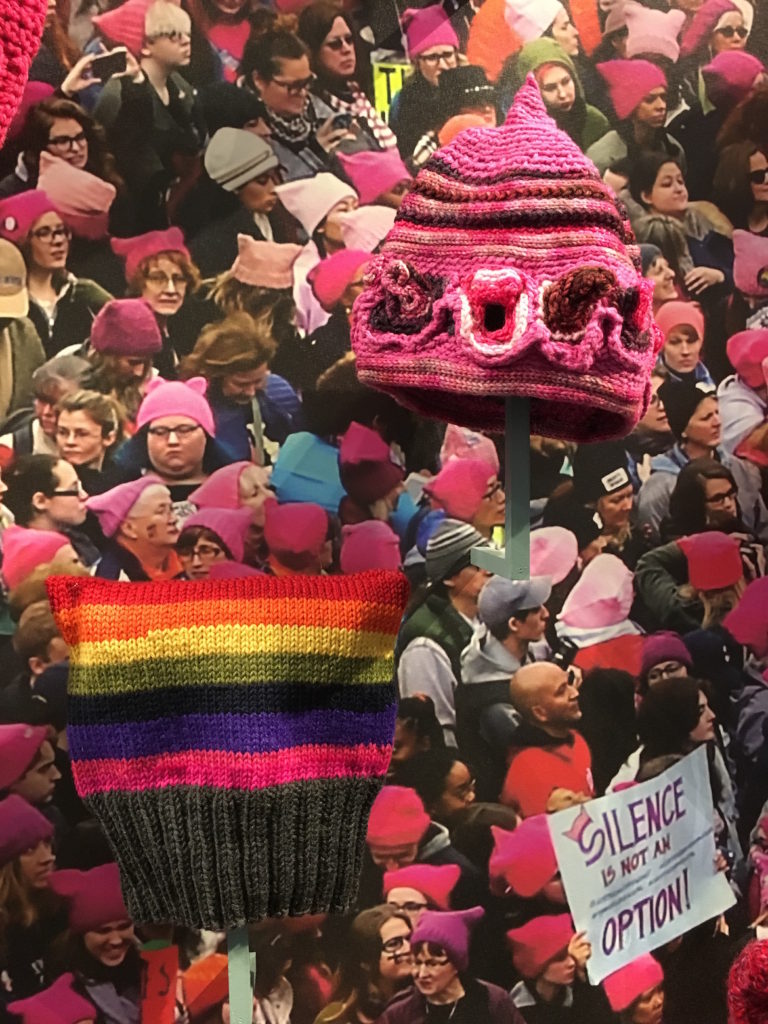
Beginning yesterday, the museum began offering an additional display of a few hundred pussyhats contributed by Vermont curator Beth Miller. “The donors would like for these hats to go back out into the world,” McLaughlin says. “People will be welcome to take them with them.” And wear them in marches this weekend.
At 3 p.m. Sunday, Jan. 21, McLaughlin will moderate a panel discussion at the museum entitled “Make Against the Machine: Needlecraft and the Resistance.” Speakers will include Pussyhat Project co-creator Jayna Zweiman; Virginia Johnson, owner of Cambridge stitch-lounge Gather Here; local fiber artist and craftivist Adrienne Sloane; and Sue Bleiweiss of The Artist Circle Alliance and curator of the museum’s “Threads of Resistance” exhibition.
McLaughlin says the exhibit touches on accusations that the pink of the hats excluded some communities. Zweiman—who grew up in Needham and studied at Providence’s Rhode Island School of Design before moving to Los Angeles—recently wrote: “There are some people who have felt invisible because of this project. Some have interpreted pink hats with cat ears as white women’s vulvas. Not all women have pussies. Not all pussies are pink. Our intent was and always will be to support all women.”
McLaughlin says, “It was supposed to look like a cat, a play on words, because Donald Trump said, ‘Grab them by the pussy.’ … It was to carry on this tradition of craftivism. They picked that color of femininity, because it represents tenderness, to really reclaim that color, not as a symbol of weakness.”
Help us keep producing our great coverage of local arts by contributing to Wonderland on Patreon. And sign up for our free, weekly newsletter so that you don’t miss any of our reporting.
